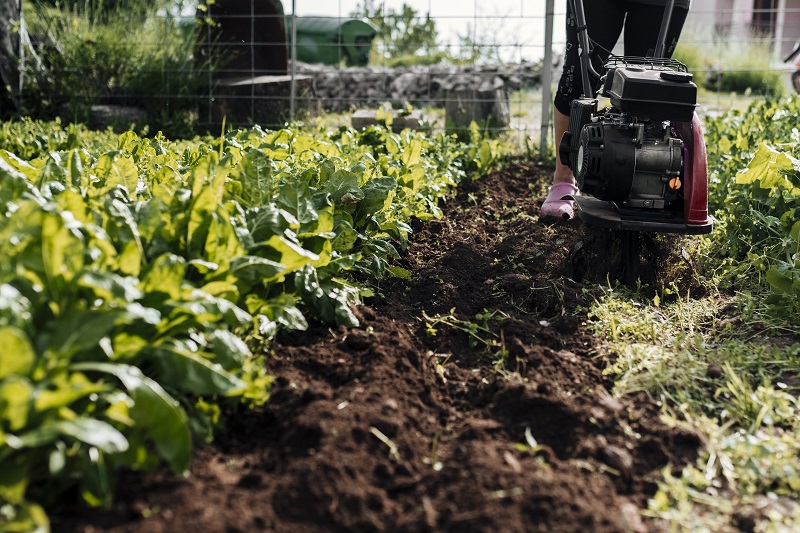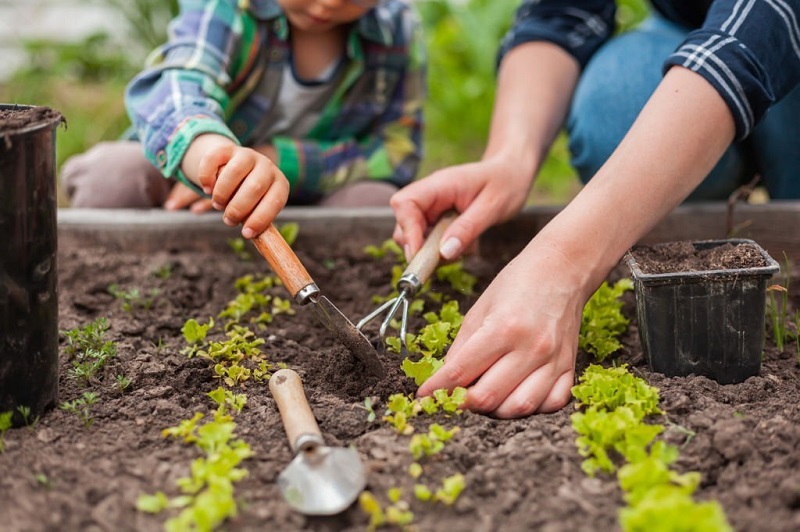Let’s talk about living mulch—nature’s clever trick for keeping your garden in top shape! It involves using real plants to blanket your soil and is generally considered the smartest way to garden sustainably.
This fantastic method does wonders for soil health, gets rid of weeds, and saves water. By throwing some living mulch into your garden, you’ll create an efficient space that thrives without you breaking a sweat.
Choosing this approach means you’ll score a vibrant, planet-friendly garden that’s kind to both the environment and your back pocket. This guide’s going to show you how to set up a living mulch system in no time.
Choose the Right Plants
When picking plants for your living mulch, think of it as building your garden’s dream team. Go for the low, quick-spreading types. Clover and creeping thyme, for instance, are perfect contenders.
These ground-huggers excel at blanketing soil without muscling in on your primary crops. For sunnier regions, consider alyssum or chamomile to enrich your landscape.
These plants come from the British Isles. That’s why they’re so tough and can handle rough weather. You’ll need to understand how they grow, though. Nobody wants their mulch plants fighting with the veggies for nutrients.
Take some time to pair your mulch with what your garden actually needs. Do this right, and you’ll end up with a living system more colourful and lively than any St. Patrick’s Day party you’ve ever seen.
Prepare the Garden Bed
Getting your garden bed sorted is the secret to creating an amazing mulch setup. Getting your garden bed sorted is the secret to creating an amazing mulch setup.
Start by yanking out those nutrient-thieving weeds and debris. After clearing the area, blend in organic boosters like compost or well-aged manure to energise your soil base.
This helps your plants develop robust root systems and vigorous growth patterns. Level the soil surface carefully, as it ensures your seeds will spread evenly without clustering in low spots.
These preliminary steps aren’t optional shortcuts. They’re essential groundwork for creating a beautiful and efficient space.
Planting Techniques
To score impressive growth in your living mulch garden, you’ll need to follow a specific technique. Start by nailing the perfect spacing and planting depths for each plant species.
Clover, for instance, needs about 15 centimetres of breathing room, while vetch requires more due to its wild spreading habits. Try slipping those mulch plants between your primary crops. It’s a smart approach that creates natural ground coverage while keeping unwanted plants at bay.
After positioning your chosen varieties, give everything a thorough soak to help the seeds nestle into place and begin growing.
Don’t overlook timing, as it matters enormously here. Plant your mulch when there’s sufficient time for it to establish properly before your main harvest arrives. Follow these tips, and your living mulch system will quickly become the standout feature of your landscape.
Maintenance Practices
Maintaining your living mulch setup requires some attention and regular care. Watch for pest issues or plant ailments, then tackle them with sustainable methods. Beneficial bugs or neem oil work wonderfully for keeping the balance right.
During dry spells, ensure proper moisture reaches both your crops and ground cover. Consider drip systems or soaker hoses for efficient watering that targets roots directly without excess runoff.
Occasionally, trim back your mulch plants when they grow too enthusiastic. This prevents them from competing with your primary specimens.
This approach to gardening keeps your plants in top shape, controls weeds, and lets the mulch do its job.
Troubleshooting Common Issues
Sometimes, your living mulch can go a bit wild and start muscling in on your main crops’ territory. Regular maintenance with a bit of light pruning will keep things in check.
If it’s getting too enthusiastic, thin out the mulch to give your cultivars some breathing space and cut it back to ground level.
Pest invasions can also be a big challenge for living mulch setups. So, keep a close watch and tackle problems using natural methods.
Introducing helpful insects like ladybirds or lacewings can knock pest populations down. If things get tough, organic sprays like neem oil are your backup plan.
Mix up the mulch diversity or throw in some nitrogen-fixing legumes to keep soil fertility humming. Keep an eye on how your garden responds, and make small tweaks as needed to keep everything in good condition.
Remember, over time, living mulch can drain soil nutrients. Regular soil sampling helps you spot areas that need a tune-up. That said, you might even need to call in gardening experts for this part.
Benefits Beyond Weed Control
Living mulch is like a secret weapon that’ll turn your garden into a magazine-worthy space. Its roots dig through the soil and make it a breeze for plants to snag all the nutrients they need to grow big and strong.
This also encourages microscopic creatures that break down dead plants and turn them into food for new cultivars.
Moreover, living mulch is efficient at stopping soil erosion. It covers the ground like a protective blanket, keeping your precious soil safe from rain and wild winds.
This clever ground cover is also fantastic at moisture management. It acts like a shield against the scorching sun and stops water from evaporating too fast. This trick is especially handy in areas with unpredictable weather.
To top it off, living mulch makes gardens look absolutely stunning. By mixing different plants, you create a yard bursting with life and colour. It’s like turning your outdoor space into a living, breathing work of art.
Conclusion
Giving a living mulch system a crack in your garden is a brilliant idea. By picking the right plants and showing your garden some love, you’ll protect your soil, keep annoying weeds in line, and save water all while being kind to Mother Nature.
So go on, embrace this green approach and enjoy the spectacular benefits for both your garden and our beautiful planet. Your garden, and the environment, will thank you!










